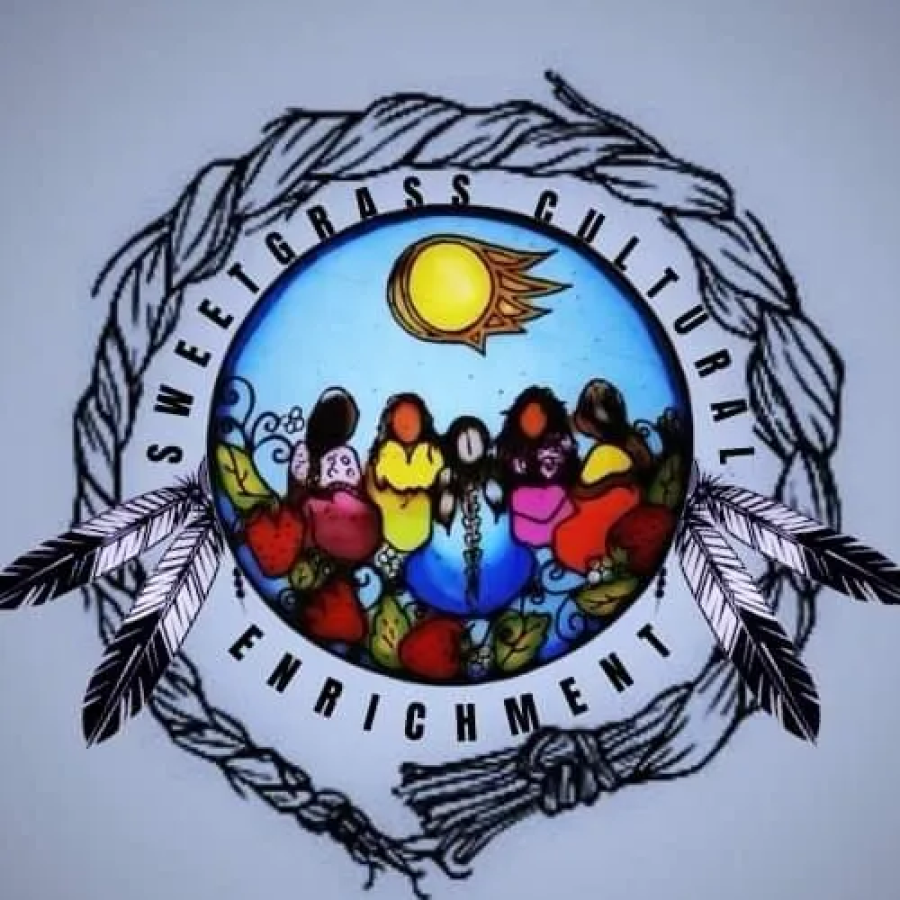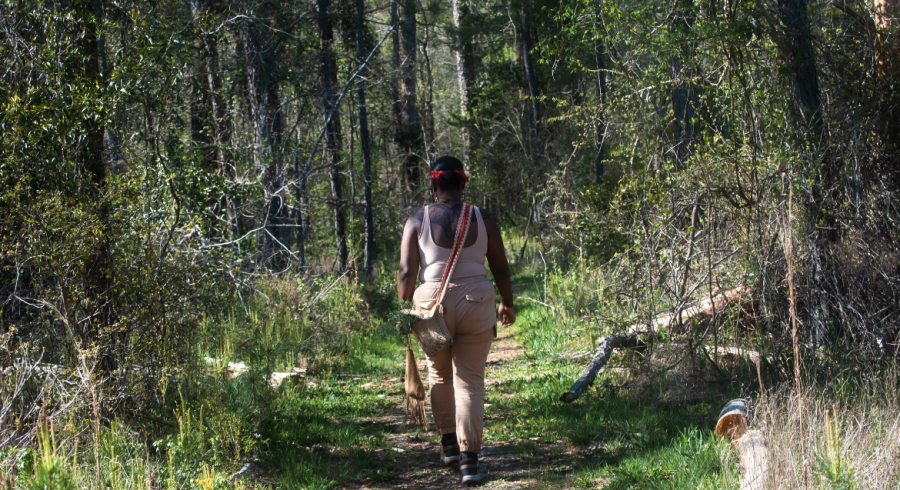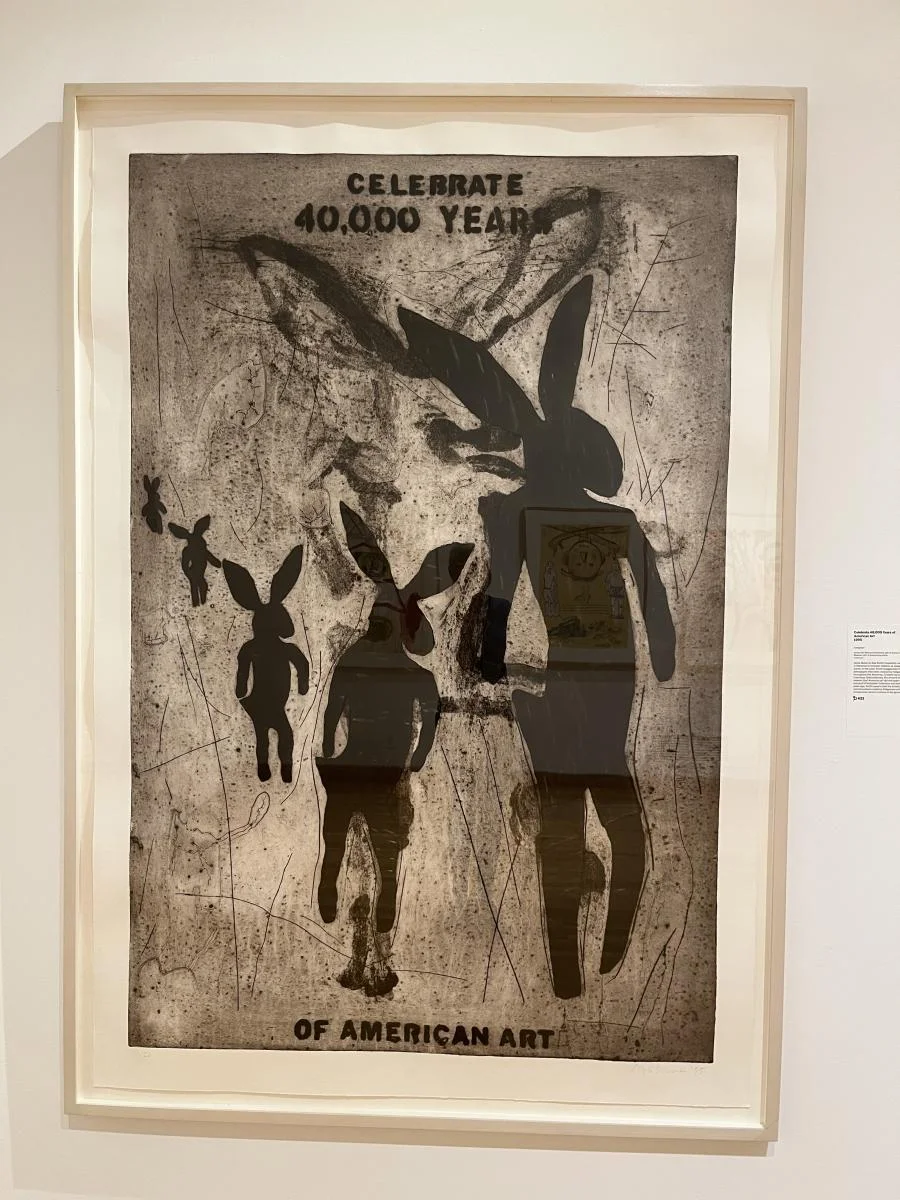Kawerak, Inc., the nonprofit arm of the Bering Straits Native Corporation,1 is a tribal consortium that provides non-health services throughout the Bering Straits Region. The Kawerak board consists of the presidents or chiefs of the 20 federally recognized tribes in the region, two elder representatives, and the chair of the Norton Sound Health Corporation (NSHC)2 board. Kawerak was incorporated as a nonprofit under state law on February 20, 1973.
About 9,600 people live in the Bering Straits Region in 16 communities; of these, 76 percent are Alaska Native. Culturally, we’re diverse. We have three major Native language groups in the region: Yup’ik in our southern villages, Siberian Yup’ik on St. Lawrence Island, and Inupiaq throughout the remainder of our villages. As Native people, we have lived in the region for 4,000 to 6,000 years. Seventeen of the 20 tribes in the Bering Straits region reorganized under the Indian Reorganization Act of 1934 (IRA) when it was extended to Alaska in 1936, and three of our tribes chose to retain their traditional form of government. Tribal councils were the only form of government in our villages until well after statehood in 1958. In the 1960s and 1970s, most of our villages incorporated as cities under state law in order to access state resources.
The Bering Straits Region of Alaska extends from Shishmaref in the north to Stebbins in the south, and includes the Diomede, King, and St. Lawrence islands to the west. The service area of Kawerak covers about 45,000 square miles, or a one-hour-and-ten-minute flight in a twin Navajo plane to the north, south, and west of Nome. No roads run between Nome and other towns or cities, so most people travel to surrounding villages by small airplane or snowmobile in the winter.
Our cultures are based on hunting, gathering, and sharing. The region is extremely rich in animal resources. Because we’re so close to Russia, the Seward Peninsula serves as a bottleneck to the huge migrations of walrus, seal, whales, fish, and birds that migrate to the arctic. This diversity and abundance of resources has enabled us to thrive for thousands of years. Today we still rely heavily on the natural resources of the area for the majority of our food.
Kawerak’s Vision for Service
Kawerak’s expansion of services has been supported by its great financial growth. In 1991 our total budget was $4.2 million and funding was split pretty evenly between state and federal grants. We’ve experienced cutbacks on the state side, but we have increased our funding 10-fold on the federal side, from $2 million to $23 million annually.
Currently we administer close to $25 million annually and have approximately 225 full- and part-time staff. We have about 105 staff based in Nome, and the remainder in the region’s villages. About 86 percent of our staff are Alaska Native.
During a retreat in 1995, the Kawerak board of directors developed its vision statement: “Building on the inherent strength of our cultural values, we shall empower our tribes to take control of our future.”
In seeking to achieve our vision, the board decided that organizationally we would:
- Exercise self-control
- Be positive
- Have confidence in our abilities
- Have a hard work ethic
- Be constructive
- Be proactive
The board also decided that when our Kawerak vision was accomplished we would have strong, healthy, proud, caring, unified, pro-active, self-sufficient Native people, leaders, and communities who know where we are going and who will take the necessary steps to achieve it. We will have pride in who we are. We will live and transmit our language and culture to our children, with councils actively governing at the local level and cooperating at the regional level to make life better for our people. This is what being a true Inupiaq, Siberian Yup’ik, and Yup’ik means!
As a result of the visioning retreat, the board and key management staff decided to shift from providing direct services, as it had before, to providing more training and technical assistance so that the IRA and traditional councils could move toward more active service delivery at the local level.
Developing Services
Kawerak provides structured continuing education opportunities to staff during work hours, and requires some staff, such as our Indian Child Welfare Act (ICWA) workers, to take college classes during work hours to earn credit toward an associate’s degree in human service delivery. Seven of our ICWA workers are close to receiving their degree.
We’ve done something similar with our Head Start Program by negotiating an agreement with our school district to have Head Start staff work in the classroom Monday through Thursday, then spend Fridays doing classroom planning and working toward their childhood development associate degrees. Eleven Head Start staff recently received their degrees.
We now provide a much higher level of skills training at the village level than we did in the past. We were fortunate to receive funds to set up nine village-based computerized learning centers that are hooked up to the internet. We’ve been working closely with the University of Alaska-Fairbanks Northwest Campus to conduct computer and carpentry training sessions in the villages. In spring 2002, we provided carpentry training to 104 people and generated more than 1,100 credit hours for Northwest Campus. Only two people dropped out of the program. This spring, we’re expanding the program to include plumbing and electrical training.
Kawerak also provides training to inmates at the Anvil Mountain Correctional Center and to halfway house residents. We’ve created a position using Alaska Federation of Natives (AFN) Wellness Program dollars to help transition inmates back into their communities and assist them with education and employment needs. Funding for this position is split between Kawerak and Manillaq, the regional tribal consortium to the north, since most of the inmates are from these two regions. Many of the social problems in rural Alaska revolve around the populations of these regions.
Our tribal councils decided early on to concentrate on governance issues rather than run programs. While every Bureau of Indian Affairs (BIA) dollar could be managed at the village level, the councils would not necessarily provide more cost-effective services. The councils have recognized that at times it simply makes more sense to band together as a consortium. Self-governance means having the maturity to make programmatic decisions in the best interest of tribal members. For example, 19 of the 20 tribal councils have authorized Kawerak to contract to administer funds from the BIA Indian Reservation Roads Program. Engineers, archeologists, construction project managers, and other roads staff are scarce—it simply isn’t possible to run a village-by-village program based on the shares each village generates.3 A village can manage a specific scheduled project, but not a longterm program—there simply isn’t enough money at the village level for both. Our job is to bring the money home to the region, and the Kawerak board decides what villages get projects when. The councils have also exercised restraint in pulling money from Kawerak. We estimate that, under our administration, our region’s villages can realize a road project once every eight to 10 years, as opposed to once every 64 years under the BIA system.
Over the past five to seven years, Kawerak has also:
- entered into a federal plan whereby we consolidated all of our employment, training, and childcare funds under one scope of work;
- entered into one of the few non-BIA Department of the Interior compacts for National Park Service funds;
- successfully pursued funding for four new Head Start facilities;
- set up Memorandums of Agreement (MOAs) between Alaska Natives and our representative organizations, and the state and federal agencies with oversight over fish resources in the Norton Sound and Arctic/Yukon/Kuskokwim areas, to guide the expenditure of congressionally appropriated research and restoration funds;
- worked with seven of our villages to apply for and receive funding for tribal multipurpose buildings. One village received funding for a renovation project;
- negotiated an agreement with the Division of Family and Youth Services (DFYS) to set in place a regional system consisting of our ICWA workers and our Kawerak Family Services workers to work in cooperation with the state DFYS, concentrating on prevention of child abuse & neglect, and the family situations that lead to it;
- sought funds and established a Child Advocacy Center in Nome; and
- started the process of remodeling a facility and will soon begin providing home services for children in Nome who are waiting for a foster family.
Self-Governance Compactor
A major turning point for Kawerak came in 1992 when we became a tribal self-governance compactor. Compacting enabled us to provide programs and make decisions differently from how the BIA had in the past. It allows us to redesign programs and services, request waivers for BIA regulations, and create new programs and services. We now have the authority to make allocation decisions and budget amendment decisions at the regional level, rather than having the budget allocations as a byproduct of a federal budget process. Besides the simplified accounting and reporting requirements, we can now create new programs, redirect funds into different areas of need, and waive regulations that impeded our ability to get things done:
- We created a Tribal Employment Rights Program. When a contract is signed for construction of a state or federally funded project, our employment staff works with the IRA, the village city council, and the village corporation to invite the contractor into the community for a village meeting. At the meeting, the tribal council, the city council, and the village corporation board of directors meet with the contractor to impress the importance of hiring locally. We also maintain a regional job bank, which is organized by village. When the contractor comes into the community, the village can hand the contractor a list of local individuals looking for work and their skills. The program has successfully ensured village hire and decreased unemployment.
- Through our administrative budget, we funded a tribal coordinator position who serves as a liaison between Kawerak and the tribal council and tribal membership. The funding covers their travel and training in each of our tribal council offices. We also fund sub-regional tribal government assistants and accounting specialists to work with the tribal coordinators and councils and assist them with office operations and management of village finances.
- We created a village planning department. This department makes funds available to the IRA and traditional councils to hire village grant writers and then works with the grant writers to develop and submit grant applications to fund community projects. This department also assists communities in developing community and tribal planning processes.
- We used a portion of our BIA Compact funds to subsidize our Community and Economic Development Program. About five or six years ago, we successfully pursued the Alaska Regional Development Organization designation for the region, which means that we have been designated by the State of Alaska as the entity in the region responsible for coordinating and working to support economic development in our area. We are the only regional tribal consortium in the state to do so. We also have a small Economic Development Administration (EDA) grant that helps fund this effort. Our EDA department is responsible for working with individuals, businesses, and entities throughout the region to develop our economic base and create jobs, as well as the regional Overall Economic Development Plans (OEDPs), and to work with the villages to develop Local Economic Development Plans (LEDPs).
Child Welfare Services
During the process of becoming a compactor, the tribal councils authorized Kawerak to access the ICWA funds on their behalf, which allowed us to submit one application rather then 20 separate applications. It also allowed us to subsidize the ICWA funds so that ICWA workers worked more hours, received Kawerak benefits, and received ongoing training and support. We now have one coordinated plan of service and child protection system, rather then 20 systems. Once we received the funds, we offered the following options to our tribes:
1. we give the money to the tribal council and the tribal council hires, supervises, and pays the ICWA worker;
2. we hire the ICWA worker on our payroll, to be located in the Kawerak/tribal offices at the village level; or
3. we provide services to the village out of our regional office in Nome.
Initially most of our villages chose the first option. After two years, however, it was apparent that this strategy was not working. The independently managed village ICWA coordinators had little training or technical support at the village level. When Kawerak brought the tribes’ attention to this problem, most opted to roll the dollars back to Kawerak. We then hired staff, subsidized their wages for more hours, and trained and supervised them. They receive Kawerak benefits, while reporting directly to the tribal council on ICWA and state-designated Children in Need of Aid cases. Under a tribal redesign, Kawerak has been able to utilize some of our compact moneys to fund tribally licensed foster homes and subsidize the wages of our ICWA workers. The board has reduced their discretionary funding at the local level.
Over the years, as federal Small and Needy Tribe funding increased, we sought to isolate the dollars at Kawerak and make the funds available to the IRA and traditional councils for office operations at the village level. In 1999, NSHC and Kawerak set a goal of establishing a Wide Area Network (WAN), a region-wide computer system to which all IRA and traditional council offices are connected. We secured $300,000 in grants to fund a portion of the hardware acquisition, but still needed $200,000. The board decided to take that amount off the top of their Small and Needy Tribe allocation to fund a portion of the WAN and then distribute the remainder of the allocation to the tribes. They were able to take this step because the money was pooled at the regional level.
Kawerak now rolls several social service funds—Small and Needy Tribes dollars, federal Johnson-O’Mally Program funds, Child Care Block Grant after-school funds, Bureau of Indian Affairs (BIA) road-maintenance funds, and ICWA funds—through our organization to tribal council offices. We also roll funds through our compact to Alaska Legal Services and, in the past, to the Alaska Federation of Natives (AFN), Alaska Inter-Tribal Council, the Alaska Native Justice Center, and other entities. We contract with the Bering Straits Foundation to do historical and site investigation work on regional corporation lands.
Formula for Success
Kawerak’s strength and success as a tribal consortium can be attributed to many factors. Our cultural values are such that we work together to achieve common goals. Much of what we’ve been able to accomplish at the regional and village level would not have been possible if the villages had chosen to pursue each initiative independently. Our corporate bylaws require that IRA and traditional council presidents serve on the Kawerak board; if they are unable or unwilling, the tribal councils select another council member to serve in their place. This requirement ensures a close working relationship between the tribes and Kawerak, although it creates the problem of a high board turnover. We are seeking to address this problem by working with tribes to set election ordinances that prevent wholesale tribal council and Kawerak board member turnover.
Because Kawerak is a tribally driven nonprofit, we don’t experience the tribal or nonprofit divisiveness that occurs in other areas of Alaska. Because the council presidents serve on our board and make the decisions and know what’s going on, we don’t have tribes pulling in and out of the corporation. Our staff is also excellent—our finance department is the best in the state and our key management staff are with us for the long haul.
Also contributing to Kawerak’s success is its stability. The president position is not elected, as it is at some tribal consortiums, where internal turmoil erupts every time leadership changes. Because of our stability, state and federal funding entities are willing to fund and work with us. The region in which we work is also not as political as other regions of the state—up north there are church politics, down south there are fish politics. We have positive relationships with our regional for-profit, NSHC, our funding agencies, and our congressional delegation, and have an MOA with NSHC for communication and collaboration. Finally, we are persistant in seeking to improve the lives of those we serve.
1. The for-profit Bering Straits Native Corporation and 20 for-profit village corporations were organized under the Alaska Native Claims Settlement Act of 1971. The regional corporation holds 2.24 million acres—and the village corporations hold 1.7 million acres collectively. The region also includes 1,077 Native allotments, comprising 85,000 acres in trust by the Department of the Interior.
2. The Norton Sound Health Corporation is the tribally authorized and owned health consortium. It owns and operates the regional hospital and provides health services throughout the region to both the Native and non-Native populations.
3. Under the BIA Indian Reservation Roads Inventory, each tribe in the nation generates a specific amount of money based on their population, roads inventory, and vehicles miles traveled.
Loretta Bullard is president of Kawerak, Inc., a regional tribal nonprofit consortium in western Alaska. Her Eskimo name is Ublugiaq, which means “star” in the White Mountain Fish River dialect. Loretta was raised in Nome, graduated from Nome-Beltz, and attended the University of Alaska-Fairbanks, University of Alaska-Anchorage, and University of New Mexico (UNM). While at UNM she obtained a certificate as a paralegal. Loretta has served as Kawerak’s president since 1991. She is enrolled to the Nome Eskimo community and has two daughters, Loren and Anna.



